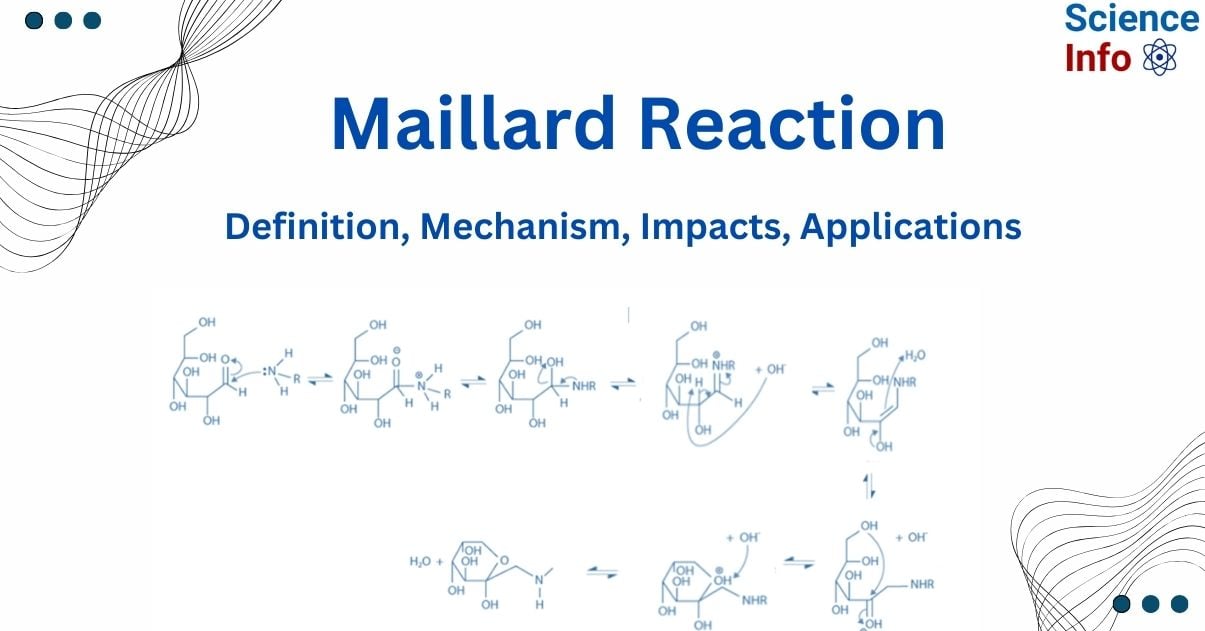
The Maillard reaction is named after the French scientist and chemist Louis Camille Maillard (1878-1936), who first described it. It is often referred to as a nonenzymatic browning reaction. When processed or cooked at high temperatures, foods undergo a chemical reaction with reducing sugars, producing distinct tastes and a brown appearance. So, it is commonly used in the food industry to enhance flavor, color, and scent.
Interesting Science Videos
What is Maillard’s Reaction?
This is a non-enzymatic browning reaction. The Maillard reaction is a complicated network of intertwining reactions that occur during food processing, particularly when heat is applied and during storage. In addition to causing nutritional damage, the Maillard reaction is principally responsible for the production of aroma and color in cooked meals, which can be desirable or unpleasant. It also results in the creation of potentially harmful chemicals and the development of antioxidant-containing components.
This reaction can have both positive and negative outcomes for food preparation. The Maillard reaction enhances the flavor profiles of tea, beer, bread, and syrup while reducing the appearance of other flavors and volatiles in foods like milk. Thus, an in-depth knowledge of the Maillard reaction and its applications in food preparation is essential.
Mechanism of Maillard reaction
The reaction between the amino group of the amino acid and the carbonyl group of the reducing sugar forms an N-substituted glycosamine, along with water. This is the first step in the Maillard reaction mechanism.
The glycosamine is now converted into ketosamines via the Amadori rearrangement.
These ketosamines react further via multiple pathways, resulting in reductones, butanedione, methylglyoxal, and a variety of other short-chain hydrolytic fission products.
Ketosamines can also be converted into melanoidins and other brown nitrogenous polymers. This gives its characteristic brown color to foods.

Overall description
Maillard reactions occur by the condensation of amino groups on proteins, peptides, and amino acids with carbonyl groups on reducing sugars, which produces Schiff bases, which undergo rearrangement into Amadori or Heyns compounds. These compounds are broken down into reactive α-dicarbonyl species that can combine with other nucleophiles such as amines, guanidines, and thiols. These intermediates can be Strecker degraded by combining with free amino acids, producing imines that fragment to form Strecker aldehydes. Lys residues produce advanced glycation endproducts (AGEs), including N-ε-(carboxymethyl)lysine, N-ε-(carboxyethyl)lysine, pyrraline, methylglyoxal-lysine dimer, glyoxal-lysine dimer (, and pentosidine.
Furfural, 5-(hydroxymethyl)furfural (HMF), reductones, and acrylamide are other more reactive Maillard reaction intermediates. Browning results from the eventual formation of large polymeric molecules called melanoidins. Overall, these cause considerable compositional, structural, and functional changes to food components such as proteins, amino acids, and sugars, potentially affecting food color, taste, protein functioning, and digestibility.
Impacts of Maillard reaction
- The development of color caused by Maillard reactions is usually unsuitable for dairy products.
- Advanced glycation endproducts are also produced endogenously and have been linked to a variety of inflammatory disorders, including renal failure, diabetes, chronic heart failure, atherosclerosis, and Alzheimer’s disease.
- The Maillard reaction can increase the allergenicity of β-lactoglobulin, hence reducing lactose concentration is recommended when creating hypoallergenic milk formulas.
- MR is responsible for a loss in nutritional value in many foods, as well as the formation of hazardous chemicals. Furthermore, the MR follows distinct biochemical pathways from other frequent reactions such as lipid oxidation, caramelization, and ascorbic acid degradation. Protein digestibility may also be reduced when proteins undergo Maillard reactions.
- Maillard reactions can also impact the functionality of proteins in food, such as their solubility and heat stability, emulsifying qualities, foaming, gelation, and textural qualities.
Applications of Maillard reaction
- Maillard-induced flavors have a meaty, brothy, roasted, or gravy-like taste and smell, making them suitable as natural flavorings for processed foods. Food chemists use industrial procedures to develop and capture these distinct flavor molecules, which are frequently added to a wide range of foods.
- Food-derived versatile MRPs can work as bactericides against a wide range of pathogens.
- Under the right conditions, the Maillard reaction can significantly increase the ACE inhibitory activity of casein hydrolysate.
References
- Morrison, R. T., & Boyd, R. N., Organic chemistry, Allyn and Bacon, Inc. 1987.
- March, J., Advanced Organic Chemistry, Wiley Eastern Limited, 1986.
- Skyes, P., A Guide Book to Mechanism in Organic Chemistry, Second edition, Orient Longman Ltd., 1988.
- https://www.sciencedirect.com/topics/agricultural-and-biological-sciences/maillard-reaction
- https://www.sciencedirect.com/science/article/abs/pii/0308814682900693
- https://ubblab.weebly.com/uploads/4/7/4/6/47469791/the_maillard_browning_reaction.pdf
- https://www.ncbi.nlm.nih.gov/pmc/articles/PMC4745522/#:~:text=Maillard%20reaction%20produces%20flavour%20and,in%20the%20absence%20of%20enzyme.
